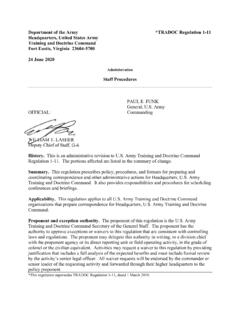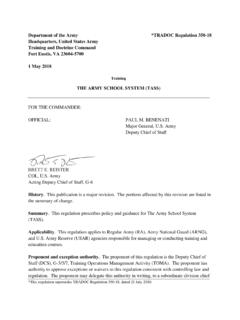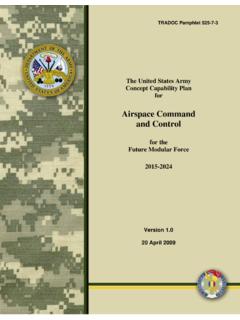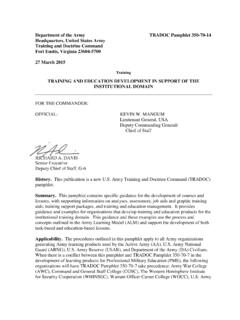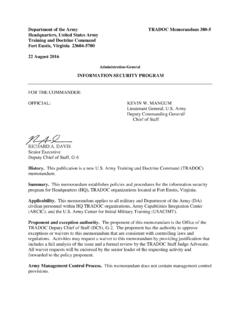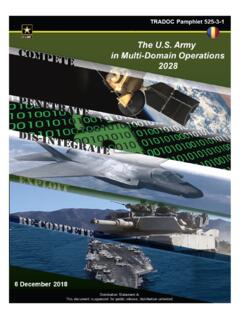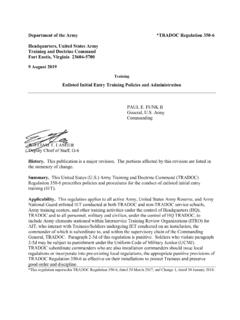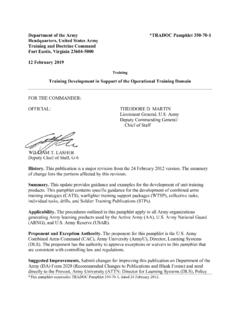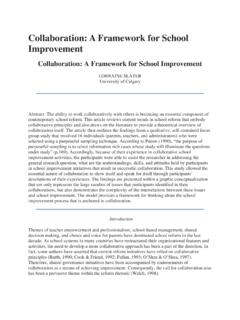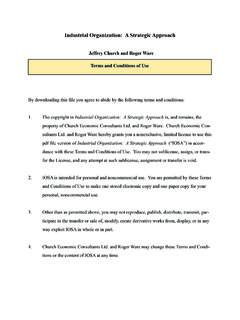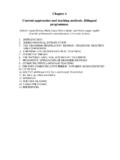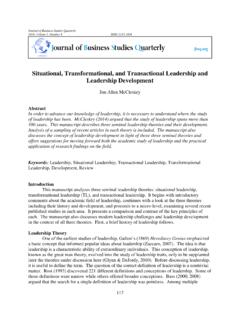Transcription of THE U.S. ARMY TRAINING AND DOCTRINE COMMAND …
1 Department of the army TRADOC Pamphlet 71-20-3 Headquarters, United States army TRAINING and DOCTRINE COMMAND Fort Eustis, Virginia 23604 6 December 2011 Force Development THE army TRAINING AND DOCTRINE COMMAND CONCEPT DEVELOPMENT GUIDE FOR THE COMMANDER: OFFICIAL: JOHN E. STERLING, JR. Lieutenant General, army Deputy Commanding General/ Chief of Staff CHARLES E. HARRIS III Colonel, GS Deputy Chief of Staff, G-6 History. This publication is a new army TRAINING and DOCTRINE COMMAND (TRADOC) guide for the development and publication of the army Concept Framework documents.
2 Summary. TRADOC Pam 71-20-3 builds upon TRADOC Regulation 71-20 by providing guidance for the development, formatting, and staffing of army Concept Framework documents. Applicability. This pamphlet applies to all Department of the army (DA) organizations and proponents that participate in the development of concepts as part of the army Concept Framework, including those directed by leadership. Proponent and exception authority. The proponent of this pamphlet is the Deputy Commanding General Futures/Director, army Capabilities Integration Center (ARCIC).
3 The proponent has the authority to approve exceptions or waivers to this pamphlet that are consistent with controlling law and regulations. Do not supplement this pamphlet without prior approval from Director, ARCIC (ATFC-ED), 950 Jefferson Avenue, Ft. Eustis, VA 23604-5763. Suggested improvements. Users are invited to send comments and suggested improvements on DA Form 2028 (Recommended Changes to Publications and Blank Forms) directly to Commander, TRADOC (ATFC-ED), 950 Jefferson Avenue, Ft.
4 Eustis, VA 23604-5763. Suggested improvements may also be submitted using DA Form 1045 ( army Ideas for Excellence Program Proposal). TRADOC Pam 71-20-3 2 Distribution. This publication is approved for public distribution and is available on the TRADOC homepage at Pam 71-20-3 3 Contents Page Chapter 1 Introduction .. 51- 1. Purpose .. 51- 2. References .. 51- 3. Explanation of abbreviations and terms.
5 5 Chapter 2 The army Concept 5 2- 1. Concepts and capabilities development overview .. 52- 2. Concepts purpose and description .. 92- 3. Strategic guidance .. 92- 4. Operational environment .. 102- 5. The army Concept Framework .. 102- 6. Classification and distribution restriction .. 13 Chapter 3 Developing army Concepts .. 133- 1. army concept document initiation and/or revision .. 133- 2. army conceptual document approval and authentication .. 133- 3. Development of capstone, operating, functional, and leadership directed concepts.
6 143- 4. Format .. 183- 5. Capability statements.. 18 Chapter 4 Staffing Procedures .. 20 4- 1. General.. 204- 2. Draft versions.. 214- 3. Action officer level review .. 214- 4. Colonel (0-6) level review.. 224- 5. General officer level review.. 234- 6. Comment priority designations.. 244- 7. Resolution of critical comments .. 254- 8. Concept approval.. 26 Appendix A References .. 27 Appendix B Guide to Formatting army Concepts .. 27 Appendix C Comment Resolution Matrix (CRM).
7 37 Appendix D Sample TRADOC Form 5 for Concept Approval .. 40 Appendix E CONOPS and White Papers .. 42 Glossary .. 44 Table List Table 4-1. Concept version numbering Table C-1. CRM Figure List Figure 2-1. Components of the Figure D-1. Sample TRADOC FORM 5-E for concept Figure D-2. Sample TRADOC FORM 5-E for concept approval (con t.)..40 Figure E-1. Sample CONOPS table of TRADOC Pam 71-20-3 4 This page left intentionally blank TRADOC Pam 71-20-3 5 Chapter 1 Introduction 1- 1.
8 Purpose a. TRADOC Pamphlet (Pam) 71-20-3 provides overarching guidance for developing, writing, formatting, and staffing army Concept Framework (ACF) TRADOC Pam 525-series administrative documents. b. This guide expands upon chapter 3 in TRADOC Regulation 71-20 by including the following. (1) Expounds on the description of army concepts documents. (2) Provides guidance for determining if a concept is required. (3) Provides guidance for planning, initiating, and developing a concept including document preparation and format (see appendix B).
9 (4) Describes the army concept staffing and approval process. (5) Provides a comment resolution matrix (CRM) example for concept staffing (see appendix C). 1- 2. References Required and related references are listed in appendix A. 1- 3. Explanation of abbreviations and terms Abbreviations and terms used in this guide are explained in the glossary. Chapter 2 The army Concept Framework 2- 1. Concepts and capabilities development overview a. Concepts are the foundation of the army s implementation of the Joint Capabilities Integration and Development System (JCIDS).
10 A concept is an idea, a thought, a general notion [inferred from specific operations or occurrences in the operational environment (OE)]. In its broadest sense a concept describes what is to be done; in its more specific sense, it can be used to describe how something is Concepts illustrate how future joint and army forces may operate, describe the capabilities required to carry out the range of military operations against adversaries in the expected OE, and explain how a commander, using military art and science, might employ these capabilities to achieve desired effects and objectives.
